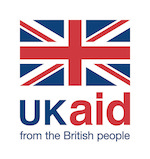This blog is part of a series exploring COVID-19 and its impact on digital humanitarian action. More findings related to current trends, risks and the path forward can be found in our report launched today.
In humanitarian contexts, COVID-19 has had a particularly severe impact. Beyond the direct health implications, economic hardship has also taken a toll. The World Bank estimates that between 119 and 124 million in 2020 were newly pushed into poverty due to COVID-19.
In this context, humanitarian support is more important than ever. And with restrictions of movement, mobile technology has proven it has a pivotal role to play. It was often the only channel available for humanitarian organisations to stay connected to employees and communities alike to deliver life-saving information and support. As the pandemic spread and the year unfolded, the humanitarian sector had to change how they operate and serve communities in crisis.
To better understand these changes, the GSMA Mobile for Humanitarian Innovation (M4H) programme today publishes a report identifying lessons from across its portfolio. The report looks at how partners and grantees in the M4H portfolio have shifted or maintained their services in humanitarian contexts during the COVID-19 pandemic using mobile technology, and how mobile network operators (MNOs) have engaged in this process. It also highlights key trends in digital programming that have emerged since the onset of COVID-19.
While more research is needed on the topic as the situation continues to evolve, three early lessons are highlighted below.
1. A digitised sector is unlikely to go back.
Like other sectors, the humanitarian sector was dependent on mobile networks and only through ongoing connectivity were operations able to continue working throughout the pandemic. This included staying in contact with employees as well as communities humanitarians serve. MNOs took a variety of measures to ensure that connectivity remained stable and that access to key information, especially health and educational resources, were accessible.
Additionally, for many organisations, the pandemic forced them to accelerate the process of digitising. For the first time, digital skills were recognised as a core skill required of humanitarians. From training frontline staff in the use of digital to upskilling of all staff on data protection measures, the capacities of humanitarians have had to shift and it is unlikely that after the pandemic ends that organisations will revert to old ways of working.
“Pre-COVID-19, although many of our processes were semi-automatic, our employee mindset was quite manual. Digitising that mindset and fully automating our internal systems and processes has been a very intentional journey that we have undertaken over the past year. We haven’t reached our destination yet, but we are far more digitally integrated today than we were nine months ago… COVID-19 has forced us to accelerate our digital transformation and business process automation, which, in retrospect, has been a good thing for us. That’s arguably the one silver lining to this COVID cloud.”
Naya Jeevan (Pakistan)
2. Partnerships are key, including those that extend beyond the traditional humanitarian sector.
The report highlights key use cases of mobile technology in humanitarian operations throughout COVID-19. While none of these use cases are new, their importance was underscored in the context of the pandemic. For example, in Africa, over 80 per cent of relief efforts since the start of the pandemic were in the form of cash. Mobile money has, over the past several years, been increasing in popularity as a delivery mechanism and as the pandemic spread, it was an attractive means of providing support at a distance. However, to do so effectively, many humanitarian organisations had to coordinate with governments, other humanitarians and mobile money providers. Those who were able to react quickly and most efficiently were those who had already established these relationships before the pandemic. This was a key lesson across use cases, strong cross-sectoral partnerships.
3. The pandemic has exacerbated the risk of exclusion and the digital divide, and it is vital to consider the needs of marginalised communities.
A common theme in the M4H team’s work is the digital divide (e.g. see our work on disability inclusion in Kenya and inclusive mobile money transfers in Burundi) and, as the humanitarian sector is increasingly digitised, how to mitigate risks that marginalised groups will be further marginalised. In the context of COVID-19 these risks were exacerbated as mobile technology became, in many cases, the primary channel for communication and support. This underlined the importance of working to close the digital divide and address the remaining barriers, which can include low digital literacy, barriers to phone ownership, poor network infrastructure and lack of inclusive design of digital programming. Of course, digital programming will never be appropriate for all contexts or all types of programming. However, as the future is increasingly digitised, it is important that the humanitarian sector continues to engage this issue.
As this report draws on examples from across the M4H portfolio, a series of blog posts will highlight projects and key lessons they illustrate. Watch this space for future posts and read the full report for more information.
Additionally, the M4H programme is hosting a joint launch event with the Overseas Development Institute tomorrow, February 23rd at 13:00 GMT.



